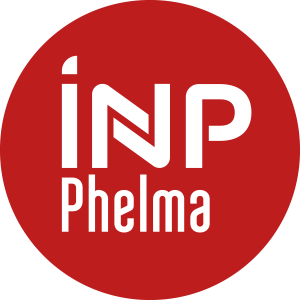Number of hours
- Lectures 11.0
- Projects 0
- Tutorials 6.0
- Internship 0
- Laboratory works 0
ECTS
ECTS 1.5
Goal(s)
Understanding and mastering of thermodynamics as a basis for stability studies and evolution conditions of physical and chemical systems.
Calculation of thermal balances (quantification of heat exchange for a reaction) in
association with a chemical process.
Study of equilibrium: forecast of equilibrium composition for a reactive mixture.
Prediction of the evolution of the system and determination of conditions for chemical
transformations.
Concepts applications to examples and phenomena of biological interest.
Content(s)
Part 1: Chemical thermodynamics / chemical equilibrium
Thermochemistry:
- Partial molar quantities
- Quantities of reaction
Chemical equilibrium:
- Criteria for equilibrium and spontaneous change
- Activity
- Equilibrium constant, law of mass action
- Principles of coupled reactions
Part 2: The behavior of solutions
- Non electrolyte / electrolyte solutions
- Colligative properties
- Biological membranes
- Solvent movement, solute movement, passive/active transport
Course sequence:
Flipped class for the course (files to learn at home or at school & e-course with video capsules)
and school sessions of explanations and exercices.
Prerequisites
Fundamental principles and auxiliary functions (enthalpy, Gibbs energy, entropy)
(Handouts and exercises available)
Semester 7 - The exam is given in english only 
Intermediate control on Part1 depending on students' origin:
- PMP: mini-project for groups of 3-4 students (synthetic report on one of the experimental techniques used to acquire thermodynamics properties in the area of thermodynamics for bio-engineering) + pitch (35%)
- PET: problem to be solved for groups of 3-4 students (35%)
Final exam: written exam 2h (authorized documents: one recto-verso A4 sheet of personal notes, calculator.) (65%)
Session 2:
written exam on Part 2, 2h (authorized documents: one recto-verso A4 sheet of personal notes, calculator.)
65% DS + 35% report CC session 1
DM ou rapport+oral : CC
Examen écrit Session1 : DS1
Examen écrit Session 2 : DS2
1 et 2 après type = session
N1 = Note finale session 1
N2 = Note finale session 2
En présentiel :
N1 = 40% CC + 60% DS1
N2 = 100% DS2
En distanciel :
N2 = 100% DS2
Semester 7 - This course is given in english only 
P. Desre, F. Hodaj, Thermodynamique des Materiaux - Equilibres de Phases et Metastabilite, EDP Sciences, 2010.
B. Diu, C. Guthmann, D. Lederer, B. Roulet, Thermodynamique, Hermann, 2007.
D.R. Gaskell, Introduction to the Thermodynamics of Materials, Taylor Francis, 2003.
D. Haynie, Biological Thermodynamics, Cambridge University Press, 2005.
H-G. Lee, Chemical Thermodynamics for Metals and Materials, Imperial College Press, 2000.
C.H.P. Luis, Chemical Thermodynamics of Materials, Elsevier, 1983.
P. Papon, J. Leblond, Thermodynamique des Etats de la Matiere, Hermann, 1990.
M. Thellier, C. Ripoll, Bases Thermodynamiques de la Biologie cellulaire, Dunod, 1991.



